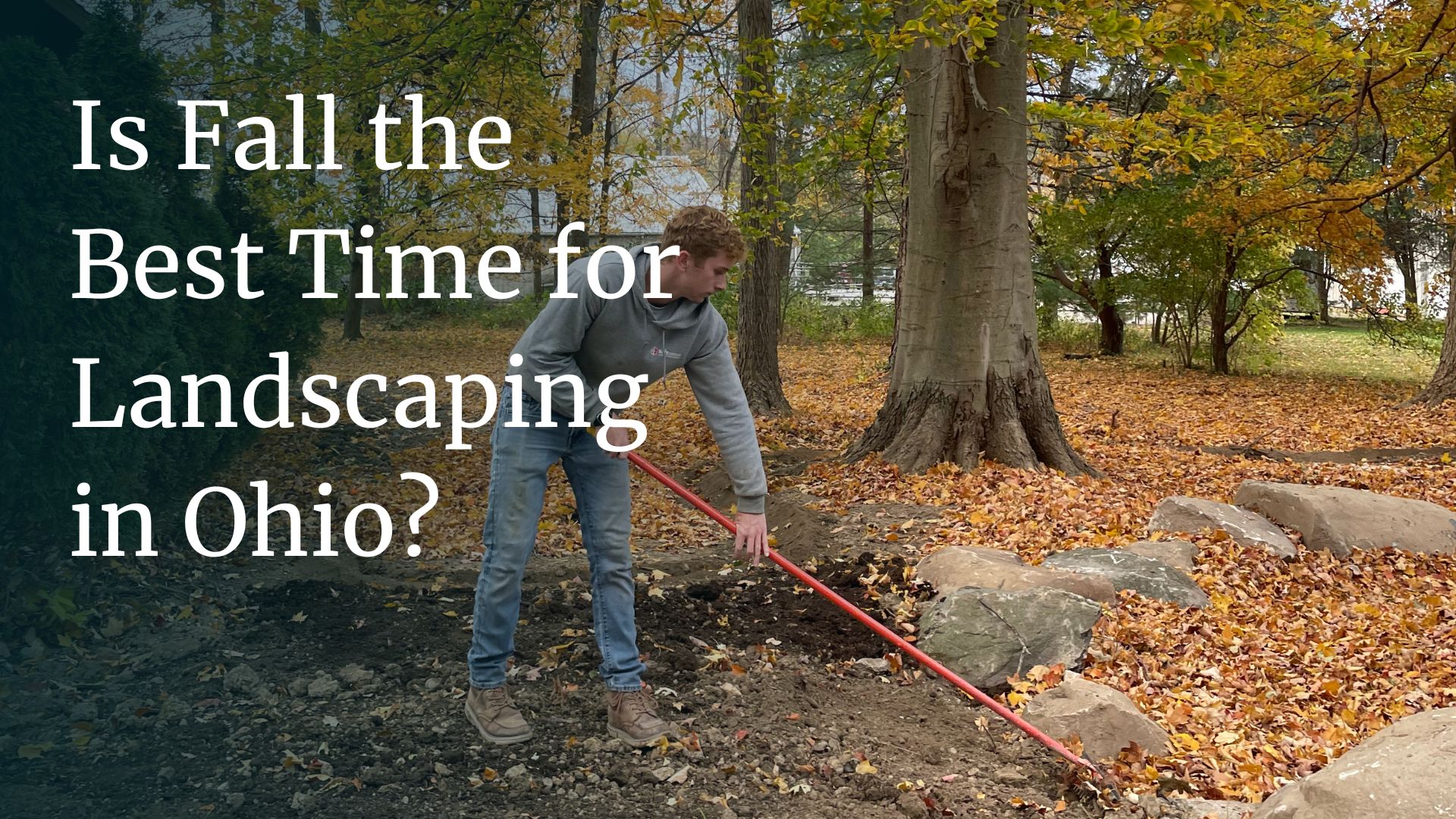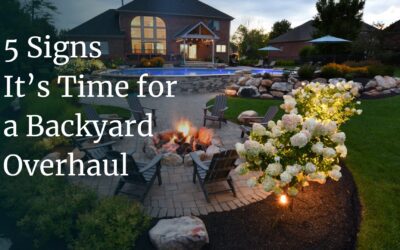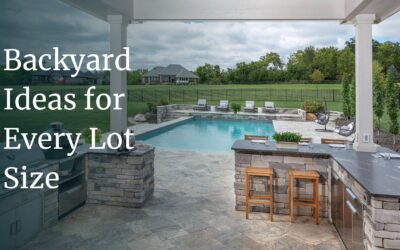When you think about landscaping, what season comes to mind? If you said spring, you’re not alone – most homeowners do. But you might be surprised to learn that fall landscaping could be the smartest investment you make for your property all year.
Fall landscaping offers better plant survival rates and easier installation conditions. After more than 20 years of tackling landscape projects in Dayton, Ohio, we’ve learned that autumn consistently delivers the best results for major landscape investments.
This article covers the benefits and advantages of fall landscaping.
Why Fall Landscaping Works Better Than Other Seasons
Fall landscaping goes beyond maintenance. It’s not just about planting mums and raking leaves. It includes installing plants, hardscaping and landscape features in the fall months, between September and November. During the fall, plants naturally slow their top growth and focus energy on developing roots.
Cool temperatures and regular rainfall create perfect conditions for plant establishment. This means your new landscape has six months to develop strong root systems before facing summer heat.
You’re giving yourself – and your landscape – a valuable head start on the growing season.
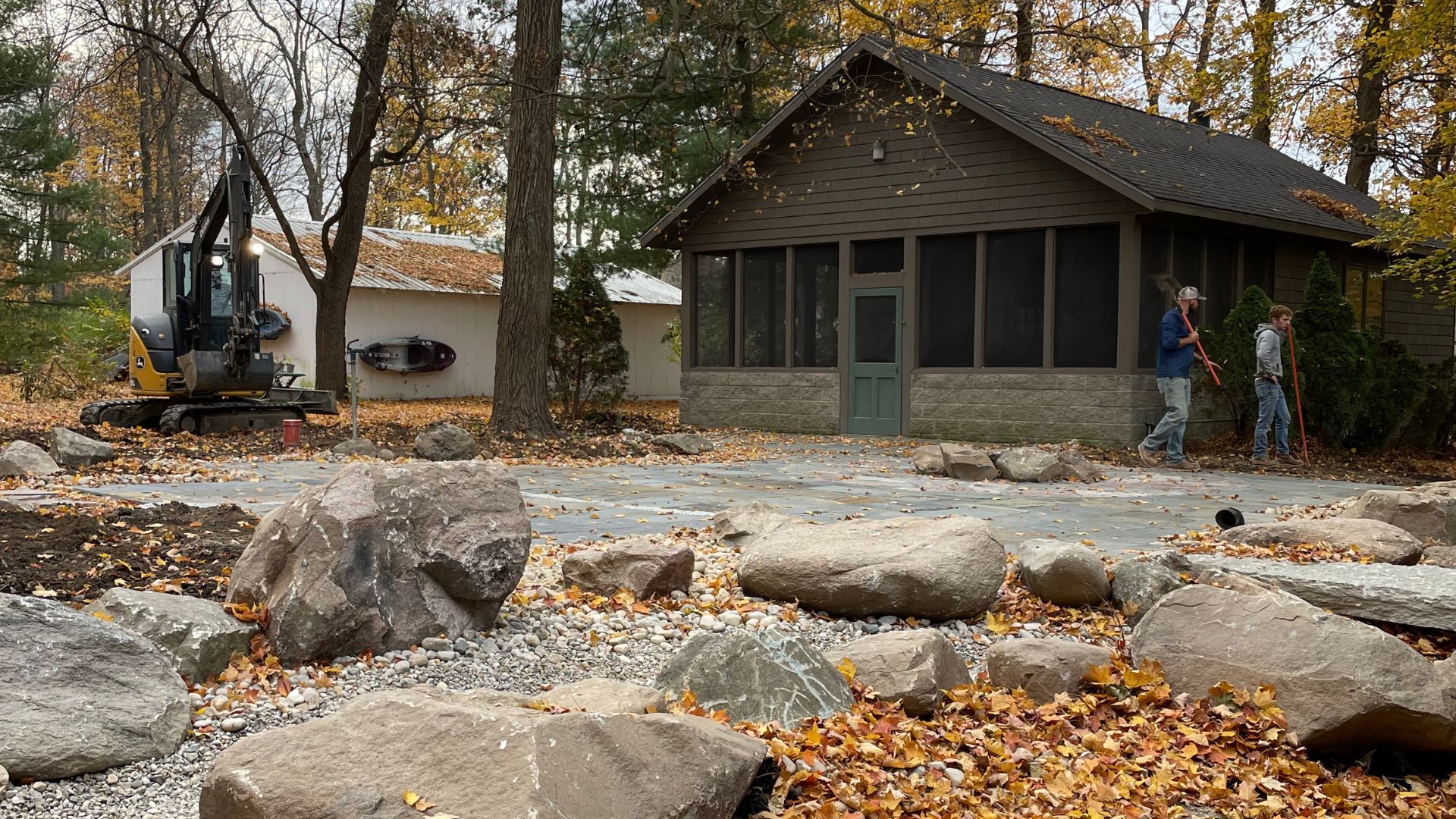
Temperature Benefits
Ohio fall temperatures range from 70 degrees in September to 40 degrees in November. This moderate weather helps plants and makes installation work more comfortable. By contrast, hot summer temperatures stress newly planted trees and shrubs. Plants installed in 90-degree weather often struggle to establish roots while supporting leaves and new growth. Fall planting eliminates this problem.
Better Plant Survival
Plants installed in the fall have significantly higher survival rates. Fall-planted trees and shrubs develop roots during cool, moist months. By spring, they have established root systems ready to support rapid growth. Plants placed in the spring must establish roots while also supporting the growth of new leaves and flowers. This dual processing creates a lot of stress that can lead to plant failure.
Cost Advantages
Fall landscaping can potentially save you money. Think about all the dead and wilted plants you see at local nurseries or hardware stores when summer heat is at its peak. With fall landscaping, you can circumvent some of that risk.
- Labor availability: Landscape contractors have lighter schedules in fall. Spring schedules often book solid by February, while fall projects typically have more flexible scheduling.
- Reduced maintenance: Fall installations require less watering and maintenance the following year, reducing long-term costs.
Comparing Fall to Spring, Summer and Winter Landscaping
So how do all the seasons stack up against each other? There are pros and cons to each season, it’s true. But keep in mind the overall benefits of each one when making your landscape timing decision.
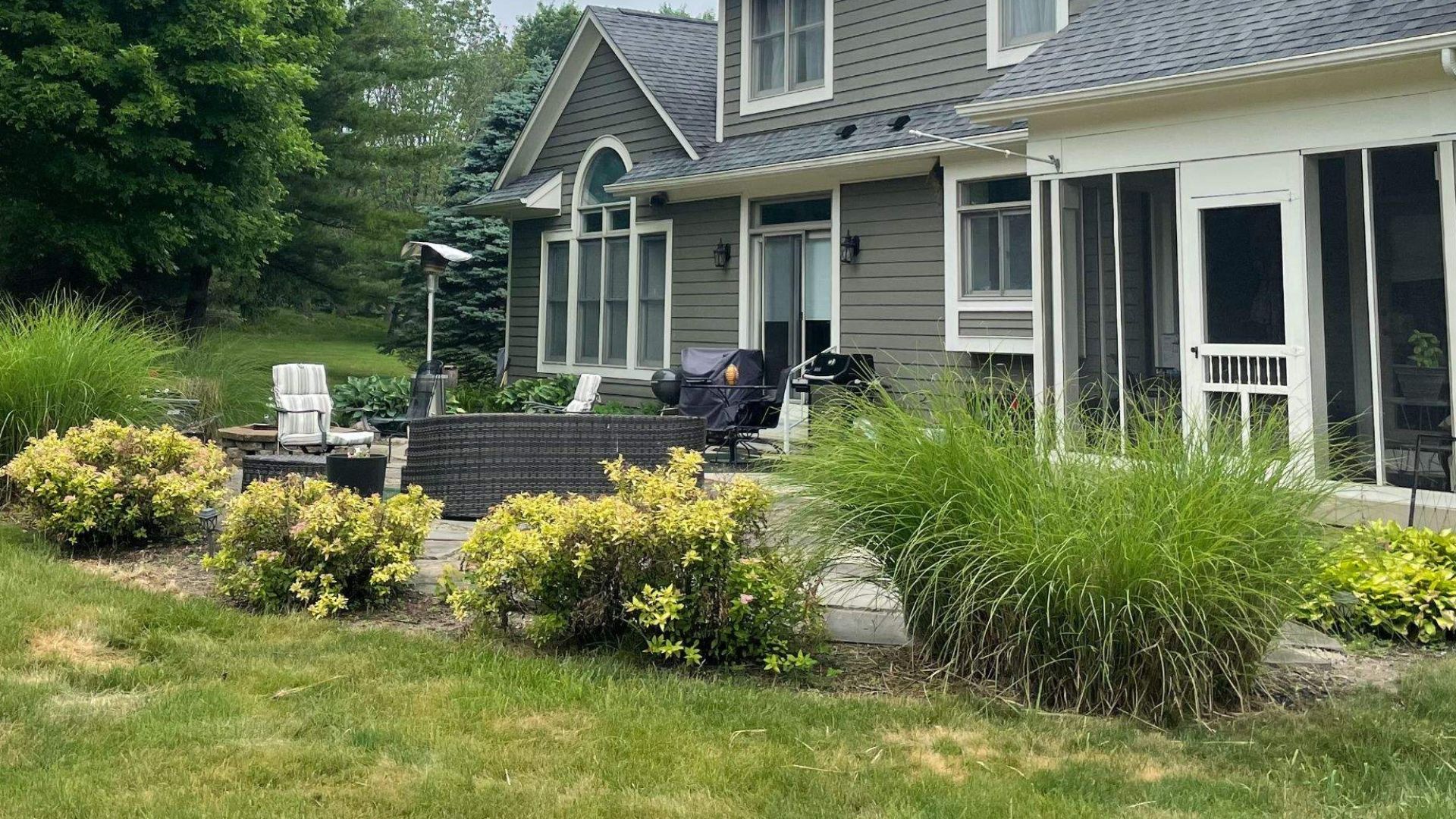
Spring Landscaping: Fresh Starts with a Few Setbacks
Spring feels like the natural time for landscaping. Warm weather and emerging growth create optimism about garden projects. There are (as with any planting season) advantages and disadvantages to this time and potential drawbacks for this optimism.
Pros:
- Immediate gratification from plant growth
- Full growing season ahead for establishment
- Motivating weather for outdoor projects
Cons:
- Contractor schedules booked months in advance
- Unpredictable weather can delay projects
- Plants face immediate stress from increasing heat
- Late frosts can damage new installations
- Wet spring conditions halt construction
Summer Landscaping: Heat and Stress
Summer landscaping presents the biggest challenges for both plants and installers. Many homeowners feel the heat – literally and metaphorically – with summer planting. Maybe they didn’t have the time or resources to invest in spring landscaping. Or maybe they had always planned to do it in the summer. Either way, summer landscaping is mostly defined by heat.
Pros:
- Dry conditions are good for hardscaping projects
- Full contractor availability (though limited by heat)
- Immediate results for homeowner enjoyment
Cons:
- Extreme stress on newly planted materials
- Daily watering requirements increase costs
- Higher plant mortality rates
- Limited plant selection at nurseries
- Risk of heat damage to new installations
Reality check: Plants installed in summer heat often require replacement the following year. This makes summer landscaping the most expensive option long-term.
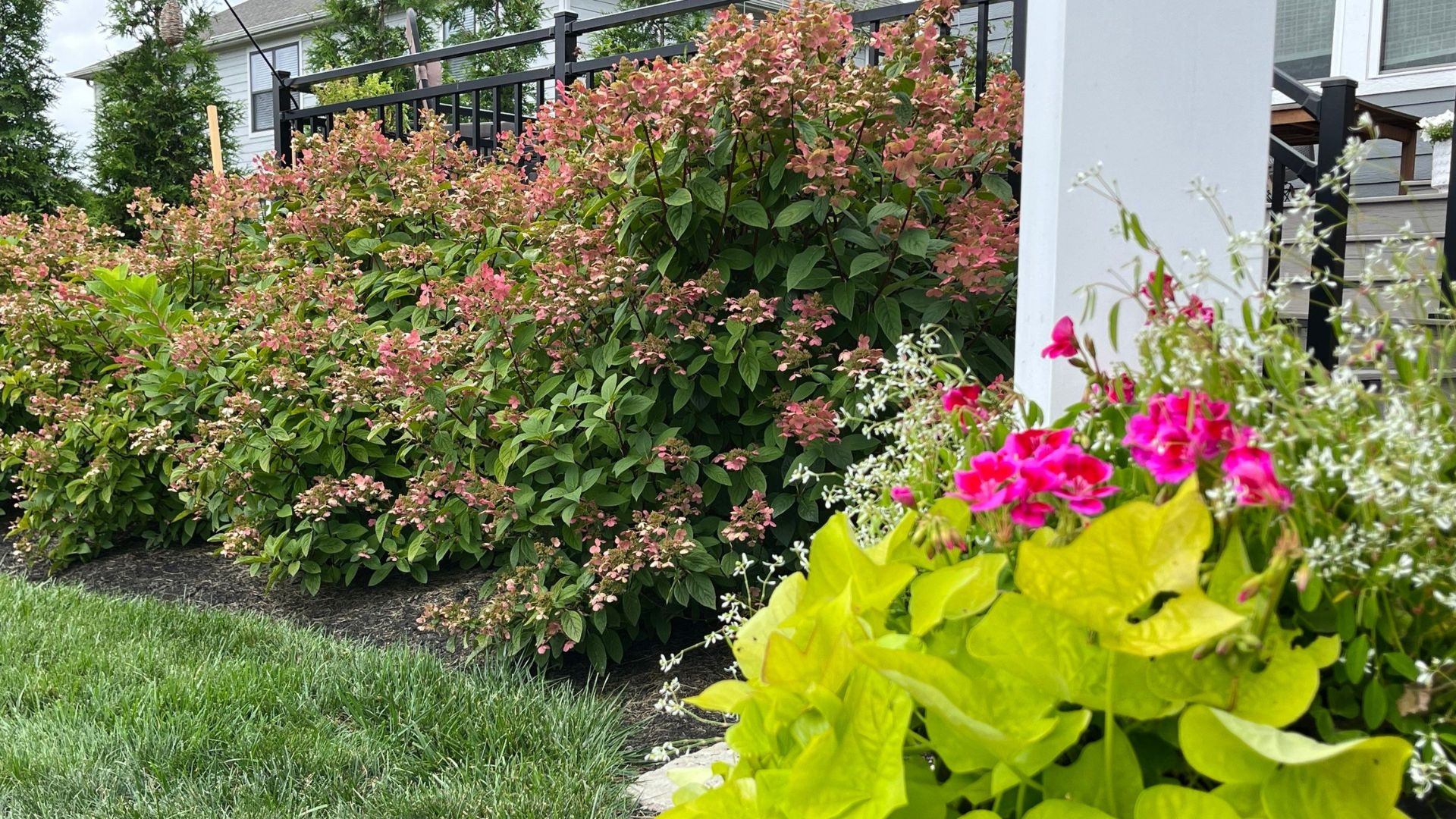
Winter Landscaping: Limited Opportunities
Winter landscaping is mostly limited to planning and hardscaping during mild periods. This is self-evident; without consistent sun or warm temperatures, plants and landscaping components won’t establish or thrive.
Pros:
- Time for thorough design development
- Tree removal work is less expensive
- Planning allows for better spring preparation
Cons:
- No plant installation possible
- Weather delays extend project timelines
- Limited working windows
- Ground freezing prevents excavation
- Material delivery complications
Best use: Winter works well for landscape projects like design development and tree removal, but isn’t practical for comprehensive landscaping needs.
Types of Fall Landscaping Projects
Large-scale landscape projects benefit most from fall timing. These comprehensive renovations typically include:
- Site grading and drainage installation.
- Hardscaping features like patios and retaining walls.
- Irrigation system installation.
- Major tree and shrub planting.
- Lawn installation or renovation.
- Outdoor living space construction.
Fall timing allows hardscaping work to proceed in comfortable conditions while giving plants maximum establishment time before summer stress. For example, complete renovations starting in September can finish planting work by late November, giving plants five months of root development before spring growth begins.
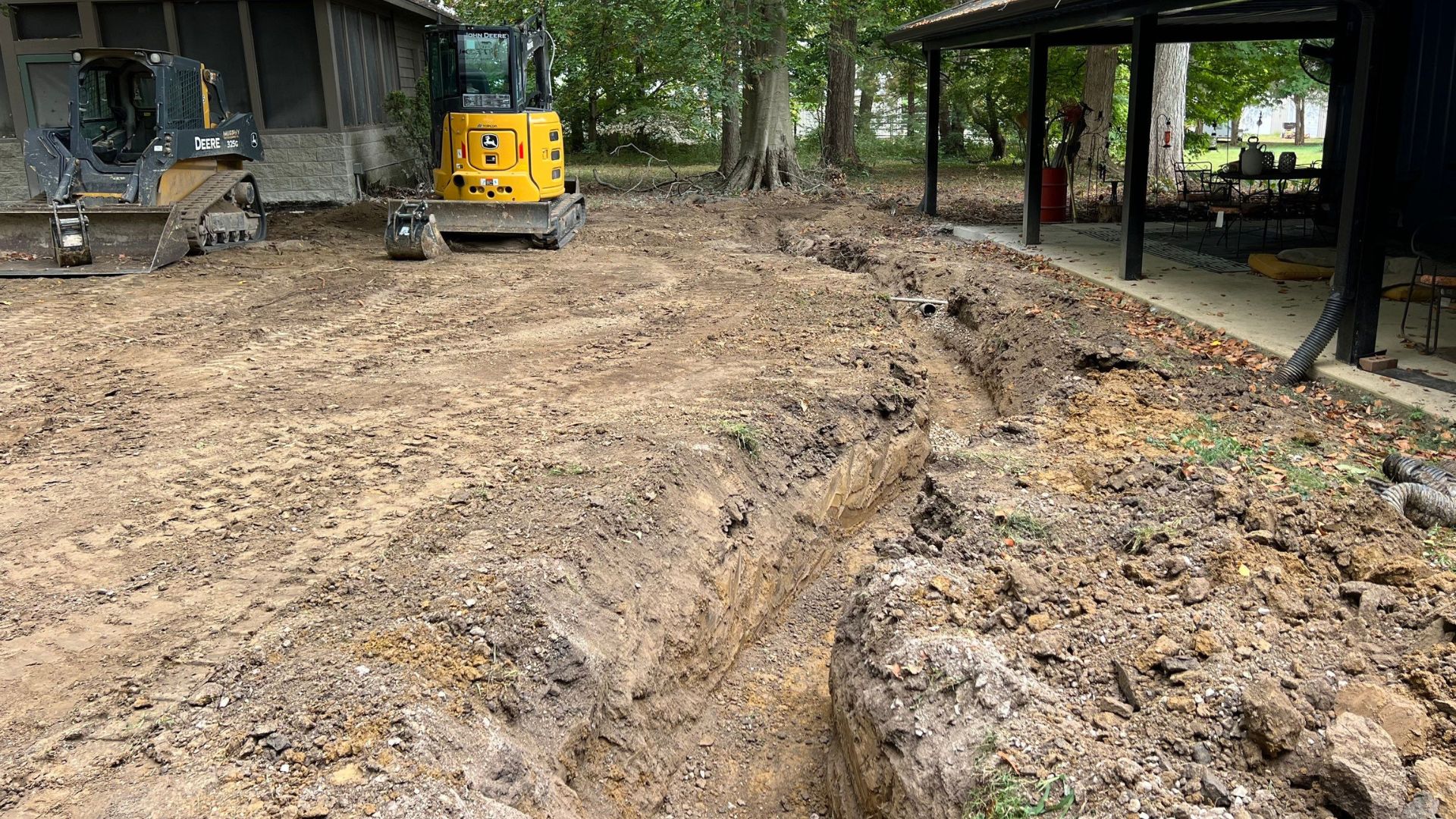
Tree Installation
Fall is hands-down the best time for tree planting. Large trees benefit enormously from extended root establishment periods. Fall landscaping enables trees to focus their energy on root development rather than leaf production. Cool, moist conditions prevent transplant shock when they’re put in the ground.
Fall provides an extended establishment period before summer heat. Plus, the natural dormancy period helps trees and plants adjust to their new environment. Native trees that do well when planted in the fall include oak, maple, redbud and serviceberry.
Let’s take the oak tree for example. These majestic trees are very adaptable, and tend to thrive with wet winters and dry summers. With that in mind, a fall planting plays in favor of the oak’s natural habitat. Autumn means there’s still moisture in the ground, without the blazing summer heat. A mature oak installed in October will be significantly more established the following summer than the same tree planted in April.
Shrub and Perennial Installation
Shrubs and perennials planted in fall often outperform spring installations by their second growing season. That’s because the extended root development period creates stronger, more resilient plants. Shrubs that do well when planted in the fall include viburnum, spirea, hydrangea and boxwood. Perennials include coneflower, black-eyed susan, hosta and daylilies.
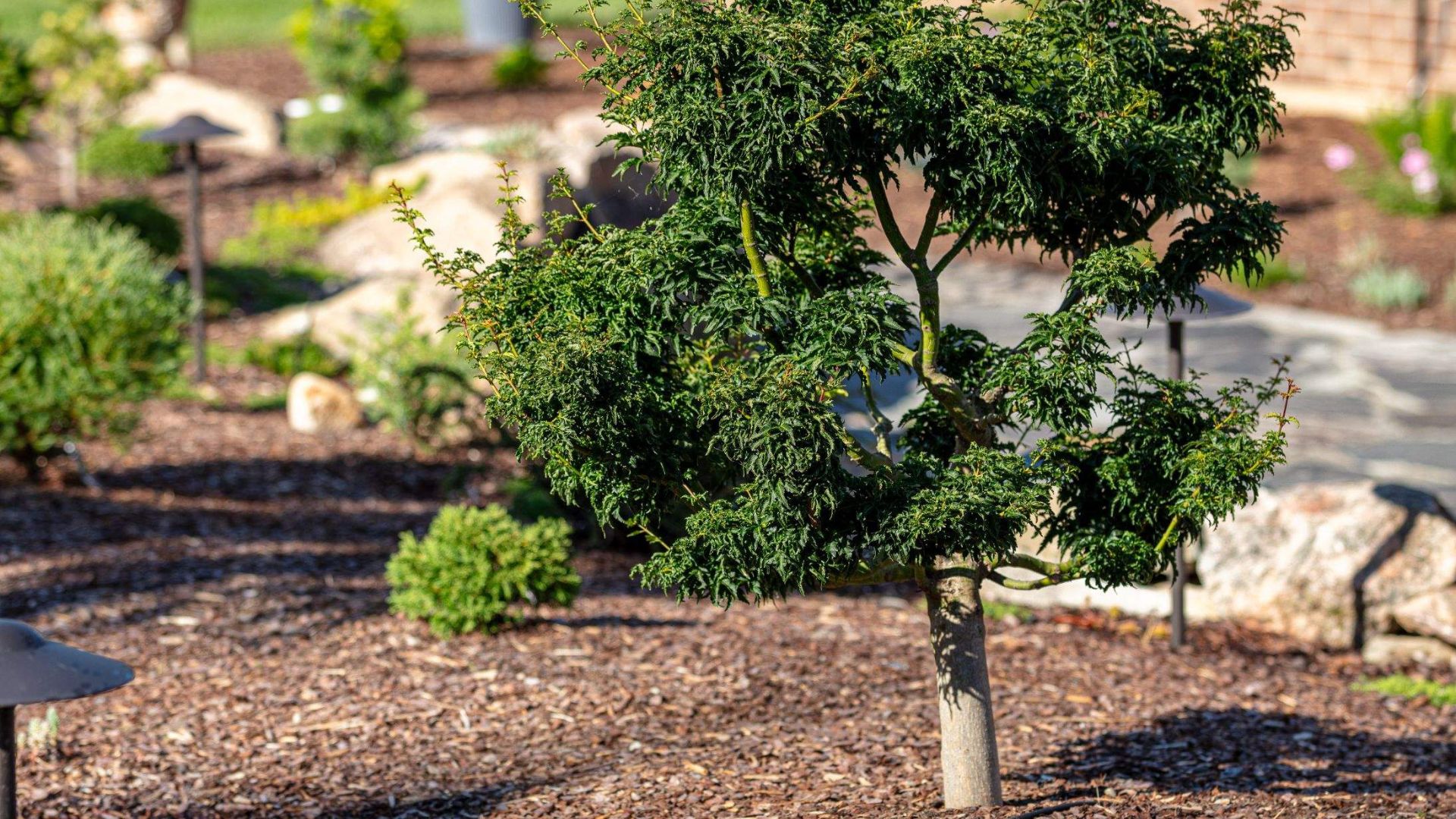
Hardscaping Projects
Fall provides ideal conditions for hardscaping installations. Adding a paver patio? Cool temperatures prevent thermal expansion issues and allow proper base preparation. Need to build a retaining wall? Moderate weather conditions improve mortar curing and allow precise installation.
Hardscaping now for later also gives you a headstart on entertaining the following year. Your outdoor kitchen, for example, can be done during the cooler months when your outdoor living space isn’t the center of attention. And if you’re itching to be outside in the crisp autumn evenings? Installing fire pits and fireplaces in fall means they’re ready for immediate use.
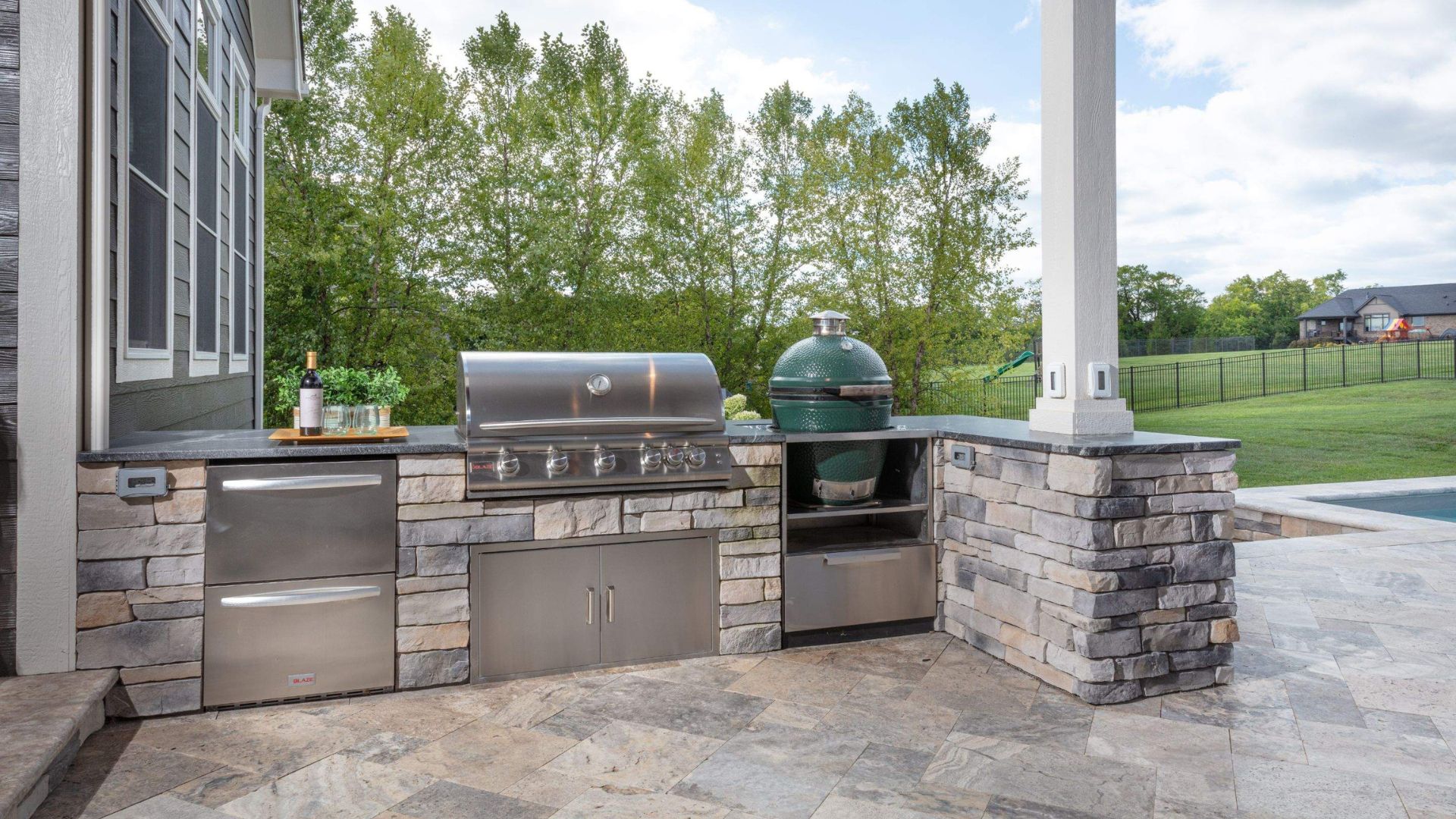
Lawn Installation
Both seed and sod installation work well in fall. Cool temperatures and fall rains provide ideal germination conditions for grass seed. Sod installed in fall develops deep roots over the winter, creating drought-resistant lawns. It can be installed through November, as long as the ground isn’t frozen.
Grass seed should be planted by mid-September in Ohio to allow establishment before winter dormancy. Fountain grass, feather reed grass and little bluestem are good fall planting choices.
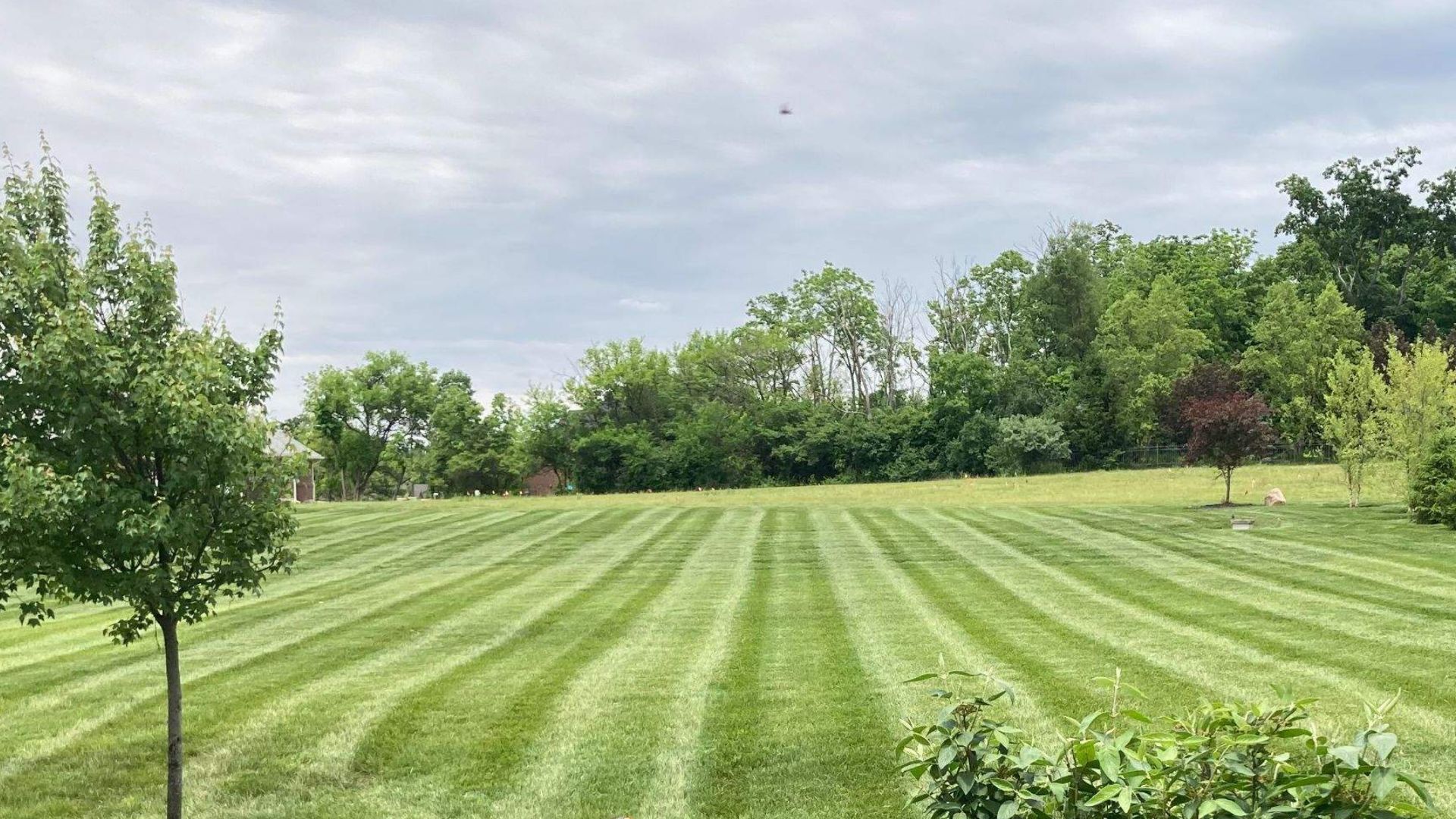
Maintenance Through the Seasons
Understanding year-round maintenance helps you evaluate the true cost of landscape ownership. Fall maintenance prepares your landscape for winter while taking advantage of ideal growing conditions:
Essential Fall Tasks:
- Deep watering before the ground freezes
- Root fertilization to support development
- Mulching for winter protection
- Proper pruning of specific plant varieties
- Leaf management around new plantings
- Irrigation system winterization
Fall installations require minimal maintenance during their first year. The extended establishment period reduces watering needs and eliminates the constant monitoring required for spring plantings.
Spring Maintenance Challenges
Spring maintenance is typically the year’s most intensive period. A lot of water is required to get everything going, pests and diseases flare back up, and any winter plant casualties need to be removed and replaced.
Spring Tasks:
- Irrigation system startup and calibration
- Fertilization program implementation
- Pruning and cleanup work
- Pest and disease monitoring
- Replacement of winter casualties
- Mulch refresh and bed preparation
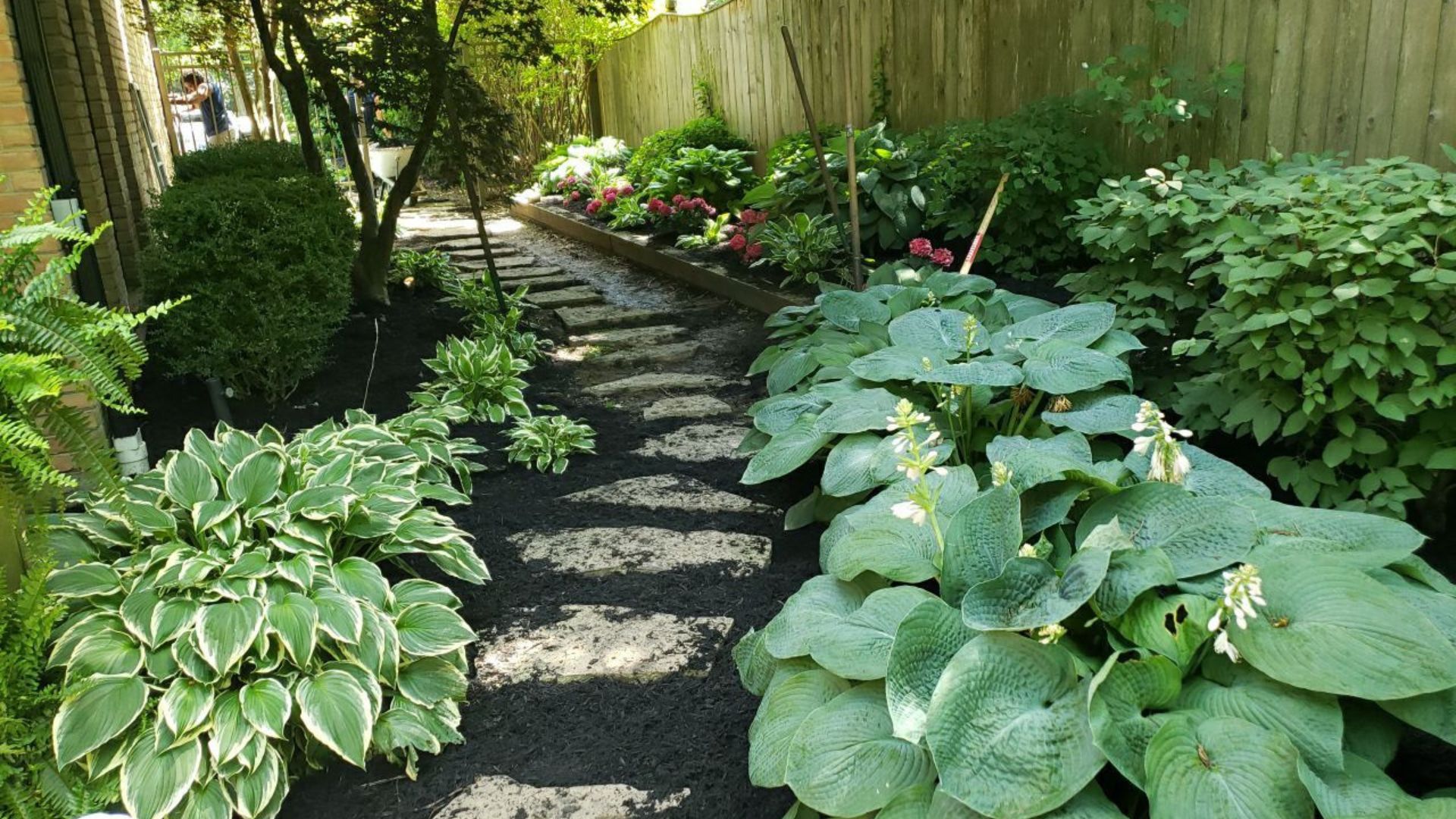
Summer Maintenance Challenges
Summer maintenance focuses on stress management and resource conservation. The heat, particularly in our region in the Midwest, can be unrelenting at the peak of summer. This requires intensive watering, which can be time-consuming, not to mention pricey.
Summer Tasks:
- Intensive watering schedules
- Heat stress monitoring
- Pest and disease management
- Irrigation system maintenance
- Drought damage mitigation
Winter Maintenance Benefits
Winter provides opportunities for structural work and planning. There’s little you can do as far as getting in the ground, though. If you’ve landscaped in the fall, however, you’ll enter winter dormancy in better condition, requiring minimal intervention during cold months.
Winter Tasks:
- Structural pruning of dormant plants
- Equipment maintenance and repair
- Design development for the following year
- Tree removal during the dormant season
Planning Your Fall Landscaping Project
Fall landscaping can ease the burden in many ways, but as with any landscaping task, there’s still some amount of preparation to undertake. You need to have your fall landscaping ideas fleshed out and select a landscape architect to bring your vision to life.
Here’s a sample timeline you can use for fall landscaping projects:
July-August: Begin design development and material selection. This timing allows for thorough planning and ensures material availability.
September: Start hardscaping projects and begin plant installation. Early fall planting gives maximum establishment time.
October: Complete major plant installations. This is the sweet spot for tree planting in Ohio.
November: Finish final plantings and complete project details. Focus on hardy plants that establish quickly.
Budget Considerations
Fall landscaping affects your budget in several ways. Long-term, you’re setting your landscape up for continued success. Higher plant survival rates reduce replacement costs. Better root establishment reduces maintenance expenses. And stronger plants require less water and fertilizer.
Material Selection
Choose plants appropriate for fall installation. If you love certain plants that require a spring or summer planting schedule, make sure you leave space in your landscape to install them when the weather is right.
Excellent Fall Choices:
- Container-grown nursery stock
- Balled and burlapped trees
- Hardy perennials and grasses
- Native plant species
Avoid in Fall:
- Tender tropical plants
- Late-season annuals
- Plants requiring extensive establishment time
Ready to Start Your Fall Landscaping Project?
Fall landscaping offers the best combination of plant performance, cost savings and installation conditions. The moderate weather, discounted materials and extended establishment period create optimal conditions for landscape success.
At The Site Group, we’ve completed hundreds of fall landscape projects throughout the Dayton area. Our experience shows that fall installations consistently outperform. The key to successful fall landscaping is early planning and design work.
Let’s talk about your fall landscaping design ideas. Not ready for a call? Check out our free Outdoor Planning Guide first.

